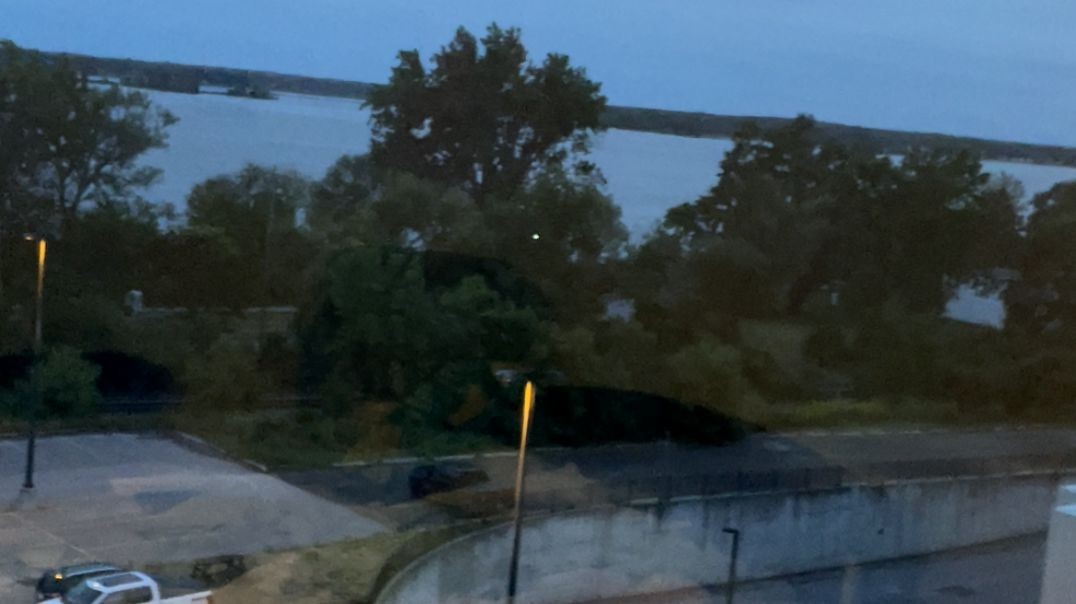28 Vues· 08/29/22· Personnes et Blogs
American Peace Flag Flies
https://studyres.com/doc/13180....383/the-united-state
The Stars and Stripes originated as a result of a resolution adopted by the Marine
Committee of the Second Continental Congress at Philadelphia on June 14, 1777, for
use on milita
ry installations, on ships, and in battle, directing that a U.S. flag consist of
13 stripes, alternating red and white; that a union be 13 stars, white in a blue field,
representing a new Constellation.
Prior to, during the War for Independence, and after
under the Articles of Confederation,
smuggling was seen as a patriotic duty of the citizens of the thirteen independent and
sovereign states, but after the ratification of the Constitution and the establishment of a
new nation, smuggling needed to be stop
ped. The new nation depended on the revenue
from customs tariffs, duties and taxes on imported goods in order to survive.
In 1790, with the customs laws firmly in place, Secretary of the Treasury Alexander
Hamilton set to work devising adequate means of e
nforcing the year
-
old regulations. "A
few armed vessels, judiciously stationed at the entrances of our ports," Hamilton
suggested, "might at a small expense be made useful sentinels of our laws." Congress
concurred, and that year appropriated $10,000 to bu
ild and maintain a fleet of
ten
revenue cutters
, which were to be placed under the charge of the customs collectors,
whose responsibilities would be enforcement of the tariff laws. Alon
g with financial
responsibility, Hamilton demanded that the officers be servants of the people.
"They
[the officers] will always keep in mind that their Countrymen are Freemen and as
such are impatient of everything that bears that least mark of a domineer
ing
Spirit."
Nine years later, Congress refined the revenue cutters' role in customs operations with
the passage of the Act of March 2, 1799, known as the Customs Administration Act. In
particular, Congress determined "the cutters and boats employed in th
e service of the
revenue shall be distinguished from other vessels by "an ensign and pendant, with such
marks thereon as shall be prescribed and directed by the President of the United
States." Additionally, the Act permitted commanders of revenue vessels
to fire at other
vessels failing to respond "after such pendant and ensign shall be hoisted and a gun
fired by such revenue cutter as a signal." By this act the Revenue Marine (later called
the Revenue Cutter Service) ensign served as the seagoing equivale
nt of a policeman's
badge, the distinctive sign of the vessel's law enforcement authority.
The job of designing the distinguishing ensign eventually fell upon Oliver Wolcott, who
had replaced Alexander Hamilton as Secretary of the Treasury in 1795. On Jun
e 1,
1799, Wolcott submitted his design to President John Adams for approval. Wolcott's
proposal featured an ensign of sixteen stripes, alternating red and white, representing
the number of states that had joined the Union by 1799, with the Union to be the
Arms
of the United States in dark blue on a white field. It is significant that Wolcott turned the
arrangement of the stripes ninety degrees to vertical to differentiate the new revenue
cutter ensign from the U.S. Flag, to denote civilian authority under
the Treasury
Department, rather than military authority under the War Department
Through usage and custom, horizontal stripes had become adopted for use over military
posts, and vertical stripes adopted for use over civilian establishments. The Civil F
lag,
intended for peacetime usage in custom house civilian settings, had vertical stripes with
blue stars on a white field. By the Law of the Flag, this design denoted civil jurisdiction
under the Constitution and common law as opposed to military jurisdic
tion under
admiralty/military law.
Although intended just for Customs house usage, the new Civil Flag became adopted
by both customhouses and merchants, and others who could afford them, to show their
civilian nature and not under military control. The
practice of using the Customs Flag as
a Civil Flag became encoded in law in 1874 when Treasury Secretary William. A.
Richardson required all customhouses to display the Civil Flag.
On May 26, 1913, with the approval of Senate Bill S. 2337, (shortly after
the fraudulent
declaration by Secretary of State Philander Knox, that the 16th Amendment had been
ratified, and during the same weeks that the Federal Reserve system and the IRS were
established) the U.S. Coast Guard absorbed the Revenue Cutter and the Lif
e Saving
-
Lighthouse Services, becoming a part of the military forces of the United States,
operating under the Treasury Department in time of peace and as a part of the Navy,
subject to the orders of the Secretary of the Navy, in time of war.
The Civil
Flag used by the cutter service was modified, placing the Coast Guard insignia
on the stripes in the field , and was adopted under Coast Guard authority, losing it's
original significance of civilian authority, which by then had long been forgotten. As the
Federal government acquired more control over the States and their citizens during and
after World War II, by 1951 the original Civil Flag had been phased out completely, it's
existence left as an artifact of time in a few old photographs and a rare menti
on in old
books.
Today, the last vestige of the Civil Flag, the U.S. Coast Guard flag, being under the civil
jurisdiction of the Department of Treasury during peacetime, is identical to the revenue
cutter ensign, but with the service insignia emblazoned o
n the stripes in the field.
It is still seen as the shoulder patch of U.S. Customs employees but it too now has the
gold fringe signifying Admiralty/Military/Law Merchant jurisdiction Nathaniel Hawthorne's
The Scarlet Letter
, published in 1850 before the War Between
The States has this description of the U.S. Civil Flag in the introduction, "The Custo
m
House"
---
Salem Custom House
–
1850
Salem Custom House
–
circa 1900
". . . Here, with a view from its front windows adown this not very enlivening prospect,
and thence across the harbour, stands a spacious edifice of brick.
From the loftiest
point of its roof, during precisely three and a half hours of each forenoon, floats
or droops, in breeze or calm, the banner of the republic; but with the thirteen
stripes turned vertically, instead of horizontally, and thus indicating that a civil,
and no
t a military, post of Uncle Sam's government is here established.
Its front is
ornamented with a portico of half
-
a
-
dozen wooden pillars, supporting a balcony,
beneath which a flight of wide granite steps descends towards the street Over the
entrance hovers
an enormous specimen of the American eagle, with outspread wings, a
shield before her breast, and, if I recollect aright, a bunch of intermingled thunder
-
bolts
" . . Here, with a view from its front windows adown this not very enlivening prospect,
and thence across the harbour, stands a spacious edifice of brick.
From the loftiest
point of its roof, during precisely three and a half hours of each forenoon, floats
or droops, in breeze or calm, the banner of the republic; but with the thirteen
stripes turned vertically, instead of horizontally, and thus indicating that a civil,
and no
t a military, post of Uncle Sam's government is here established.
Its front is
ornamented with a portico of half
-
a
-
dozen wooden pillars, supporting a balcony,
beneath which a flight of wide granite steps descends towards the street Over the
entrance hovers
an enormous specimen of the American eagle, with outspread wings, a
shield before her breast, and, if I recollect aright, a bunch of intermingled thunder
-
bolts and barbed arrows in each claw. With the customary infirmity of temper that
characterizes this
unhappy fowl, she appears by the fierceness of her beak and eye,
and the general truculency of her attitude, to threaten mischief to the inoffensive
community; and especially to warn all citizens careful of their safety against intruding on
the premises w
hich she overshadows with her wings. Nevertheless, vixenly as she
looks, many people are seeking at this very moment to shelter themselves under the
wing of the federal eagle; imagining, I presume, that her bosom has all the softness and
snugness of an eid
erdown pillow.
But she has no great tenderness even in her best
of moods, and, sooner or later
--
oftener soon than late
--
is apt to fling off her
nestlings with a scratch of her claw, a dab of her beak, or a rankling wound from
her barbed arrows."
Befor
e 1940, no U.S. flag, civil or military, flew within the forty
-
eight states except in
federal settings and installations. Only state flags did. Since the 1935 institution of
Social Security and the
Buck Act of 1940, 4 U.S.C.S. Ch. 4 Sec. 104
-
113
, by clever
legal maneuvers the feds have entirely circumvented the U.S. Constitution, and have
overlaid federal territorial jurisdiction on the sovereign States, bringing them under the
admiralty
/military jurisdiction of Law Merchant, the Uniform Commercial Code (UCC),
the law of Creditors and Debtors.
Since then the U.S. military flag appears beside, or in place of, the state flags in nearly
all locations within the states. All of the state cour
ts and even the municipal ones now
openly display it. In the last half century they have more openly declared the
military/admiralty law jurisdiction with the addition of the gold fringe to the flag, the
military flag of the Commander
-
in
-
Chief of the Armed
Forces.
Such has been the path that has brought us under the Law of the Military Flag.
This should have raised serious questions from many citizens long ago, but
we've been educated to listen and believe what we are told, not to ask questions,
or think f
or ourselves and search for the truth.
HISTORY
OF THE US CIVIL FLAG
The first U.S. Flag, which denoted civilian versus military purposes, was designed in
1799 by Oliver Wolcott Jr. the Secretary of the Treasury
under John Adams. Wolcott's proposal featured: An
ensign, consisting of sixteen alternating
red and white
stripes representing the number of states that had joined
the Union by 1799; and the Union, represented by the
small rectangle in the upper left corner, with its Arms (an
Eagle) of the United States in dark blue on a white field.
It is sign
ificant that Wolcott‟s new civilian flag had vertical stripes, not horizontal. This
was done so that non
-
military ships would be easily recognized and not fired upon as
they tried to hail and board foreign vessels. This new flag was actively flown on
Reven
ue Cutters, what we now call Coast Guard Cutters. The original purpose of the
Revenue Cutter was to collect tariffs and other taxes that were imposed on foreign
goods. The Revenue Cutter ensign had vertical stripes to denote civilian authority under
the Tr
easury Department rather than military authority under the War Department.



















6 commentaires
Jana Roohaniova - Anderson
2 années depuisRandyP
3 années depuisvalinda-lynn: wood©®™️
3 années depuisRéne / Rainy Girard
3 années depuisJunk Journals with Alyce-Kay Ruckelshaus
3 années depuisJunk Journals with Alyce-Kay Ruckelshaus
3 années depuis